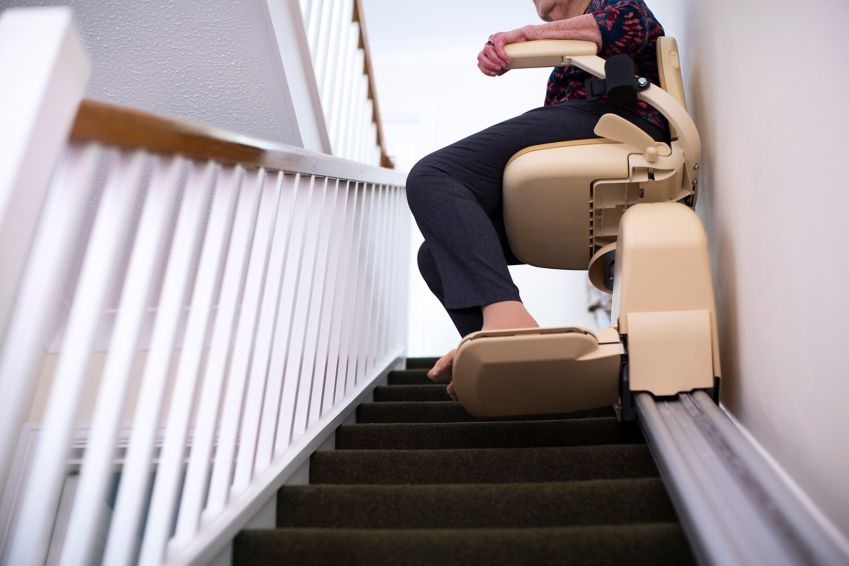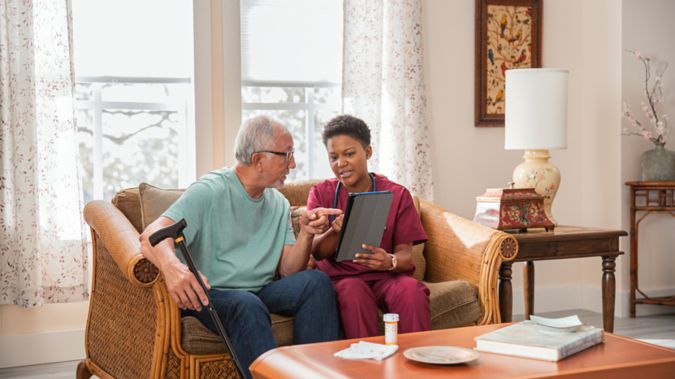A lift chair is similar to a typical recliner but with one special feature: a motorized lift device. The device is in the base of the chair and raises or lowers the seat on command. The angle of the seat assists with getting up or down from a sitting or a standing position, which can help with balance and mobility challenges as well as stiff joints and muscle pain.
Please note: A lift chair is different from a stair lift chair, which moves up and down a staircase. It’s also different from a patient lift, which caregivers use to move patients from a bed to a chair.



